Traveling with your recreational vehicle (RV) is an exciting and flexible way to explore the world. Whether you’re chasing the sun or seeking to enjoy the changing seasons. Your recreational vehicle can take you just about anywhere. However, one of the biggest challenges when traveling with the RV is preparing for different types of weather. From blazing heat to freezing temperatures, your RV trip can quickly become uncomfortable or even dangerous if you’re not well-prepared.
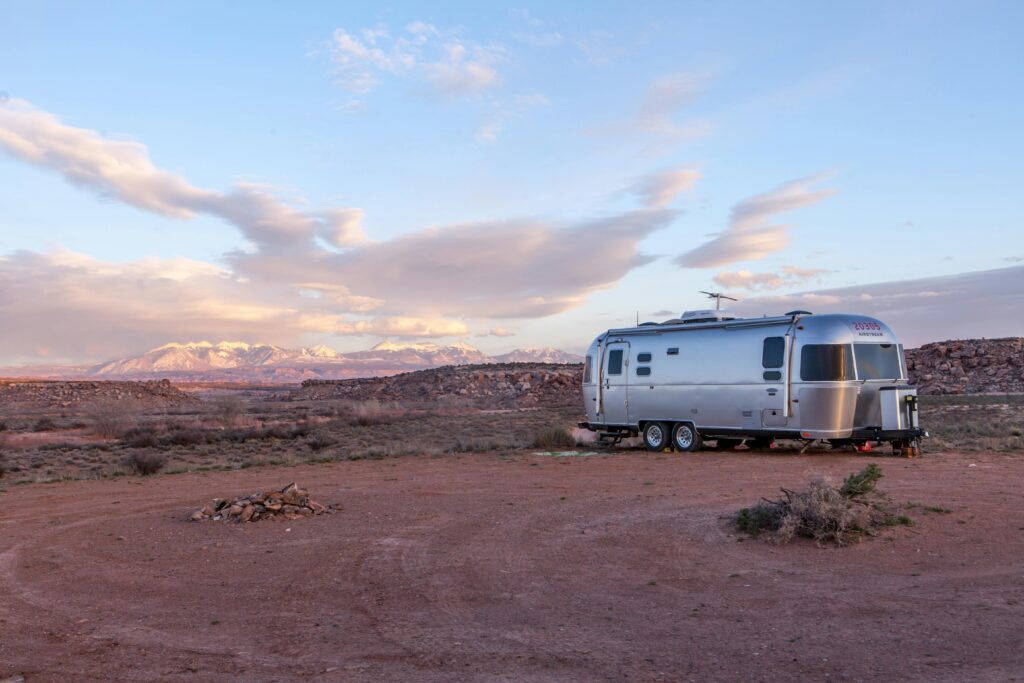
In this blog, we’ll cover essential tips and strategies for prepping your RV for all kinds of weather. Redneck Rican believe ensuring that your road trip remains smooth and enjoyable.

Understanding the Weather Forecasts
Before setting off on your RV adventure, research the weather conditions of the places you plan to visit. Utilize reliable weather apps, websites, and resources such as the National Weather Service or local meteorology updates. Knowing what kind of weather you might encounter allows you to plan accordingly.

Before setting off on your RV adventure, research the weather conditions of the places you plan to visit. Utilize reliable weather apps, websites, and resources such as the National Weather Service or local meteorology updates. Knowing what kind of weather you might encounter allows you to plan accordingly.
It’s crucial to consider not just current weather but also historical trends. For example, some regions may experience sudden storms, cold snaps, or unseasonal heatwaves. If you’re traveling across several states or regions, remember that the weather can vary dramatically within a short distance. Being caught off-guard can ruin your trip, so staying informed is key to staying safe.

Key Tools for Weather Tracking
- Weather Apps: Apps like AccuWeather, WeatherBug, or Windy offer real-time updates, alerts, and forecasts.
- Weather Radio: A portable NOAA weather radio is handy, especially in remote locations where cell service may be limited.

Traveling in Hot Weather
Cooling Your RV
RVs can heat up quickly, especially during the summer months when you’re traveling through hot regions. Without proper ventilation and cooling, your RV can feel like an oven. Luckily, there are several ways to keep things cool:

- Air Conditioning: Make sure your RV’s AC system is in good working order. Regularly clean or replace the filters and check the coolant levels. Having a backup fan or portable air conditioner can also provide extra cooling.
- Window Shades and Curtains: Reflective window shades and blackout curtains are your best friends in hot weather. They block out direct sunlight and keep your RV cooler during the day.
- Ventilation: Use vent fans to circulate air, especially when parked. Roof vents allow hot air to escape and cool air to circulate, helping regulate the internal temperature.

Water Supply and Hydration
In hot weather, staying hydrated is crucial. Ensure your freshwater tanks are full, and keep extra water bottles on hand. A water filtration system is beneficial if you plan on being off-grid for extended periods.
Don’t forget about your pets! Just like humans, pets can suffer from dehydration and heatstroke, so ensure they always have access to fresh water.
Tire and Engine Check
Hot weather can cause your RV tires to expand, which increases the risk of a blowout. Regularly check your tire pressure, especially before long trips. Make sure the tires are within the manufacturer’s recommended range. Extreme heat can also stress your RV’s engine, so monitor oil levels and coolant regularly to prevent overheating.

Sun Protection for You and Your RV
Aside from keeping the RV cool, don’t forget to protect yourself from the sun. Wear light, breathable clothing, and always apply sunscreen when you’re outside. For the RV, a portable canopy or awning provides shade, reducing the temperature inside the vehicle and giving you a pleasant outdoor space to relax in.


Traveling in Cold Weather
Insulating Your RV
Cold weather requires careful preparation to keep your RV warm and comfortable. Many RVs are not equipped to handle freezing temperatures, so you’ll need to insulate it properly:
.
- Windows: Use thermal curtains or insulated window covers to keep the cold out. Consider investing in storm windows or double-paned windows if you frequently travel in cold climates.
- Flooring: Placing rugs or carpets over your RV floors helps reduce heat loss and keeps your feet warm.
- Skirting: RV skirting prevents cold air from circulating under the vehicle, which helps keep your water lines and tanks from freezing.
Heating Systems
Before setting off into cold weather, check that your RV’s heating system is working properly. Whether you use propane, electric heaters, or a built-in furnace, maintenance is essential. Additionally, portable heaters can offer supplemental warmth but should be used cautiously to avoid fire hazards.
If you’re staying in particularly cold areas, consider adding a heated mattress pad or electric blanket for extra comfort during chilly nights
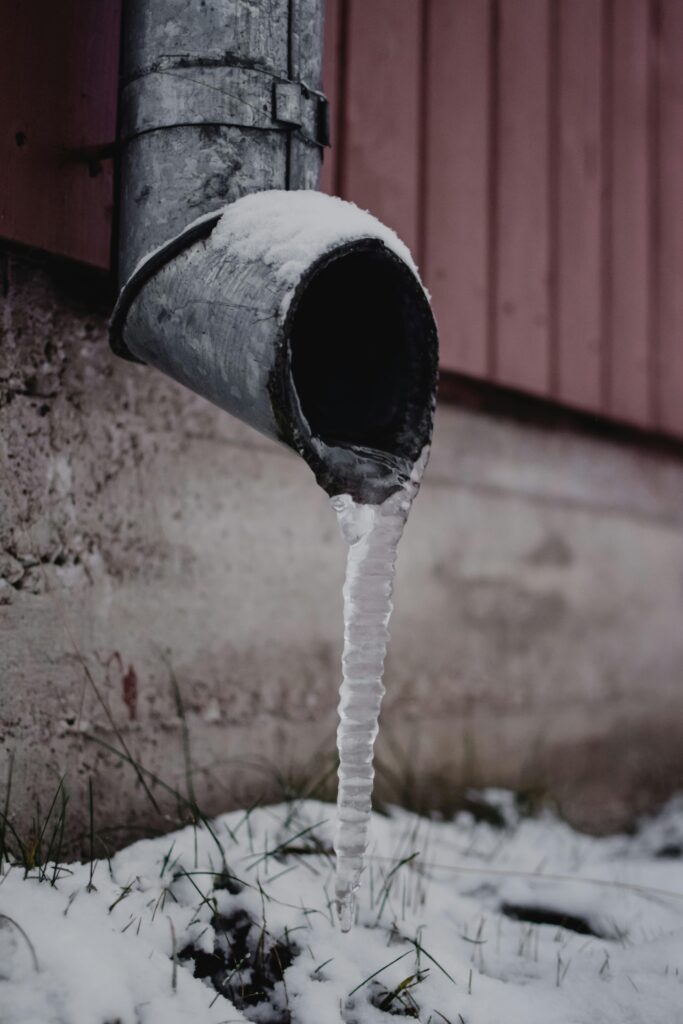
Water System Protection
In freezing weather, water pipes and tanks can freeze and burst, causing significant damage. To prevent this, insulate your water hoses and tanks with heat tape or foam insulation. If you expect extremely cold temperatures, consider using antifreeze in your tanks (designed specifically for RVs). Also, remember to leave cabinet doors open at night so warm air can reach the pipes underneath.

Driving in Snow and Ice
If you’re venturing into snowy regions, equip your RV with snow tires or chains. It’s also crucial to practice safe driving techniques, as RVs are large and can be difficult to maneuver in icy conditions. Reduce your speed, increase your following distance, and always have an emergency kit on hand.
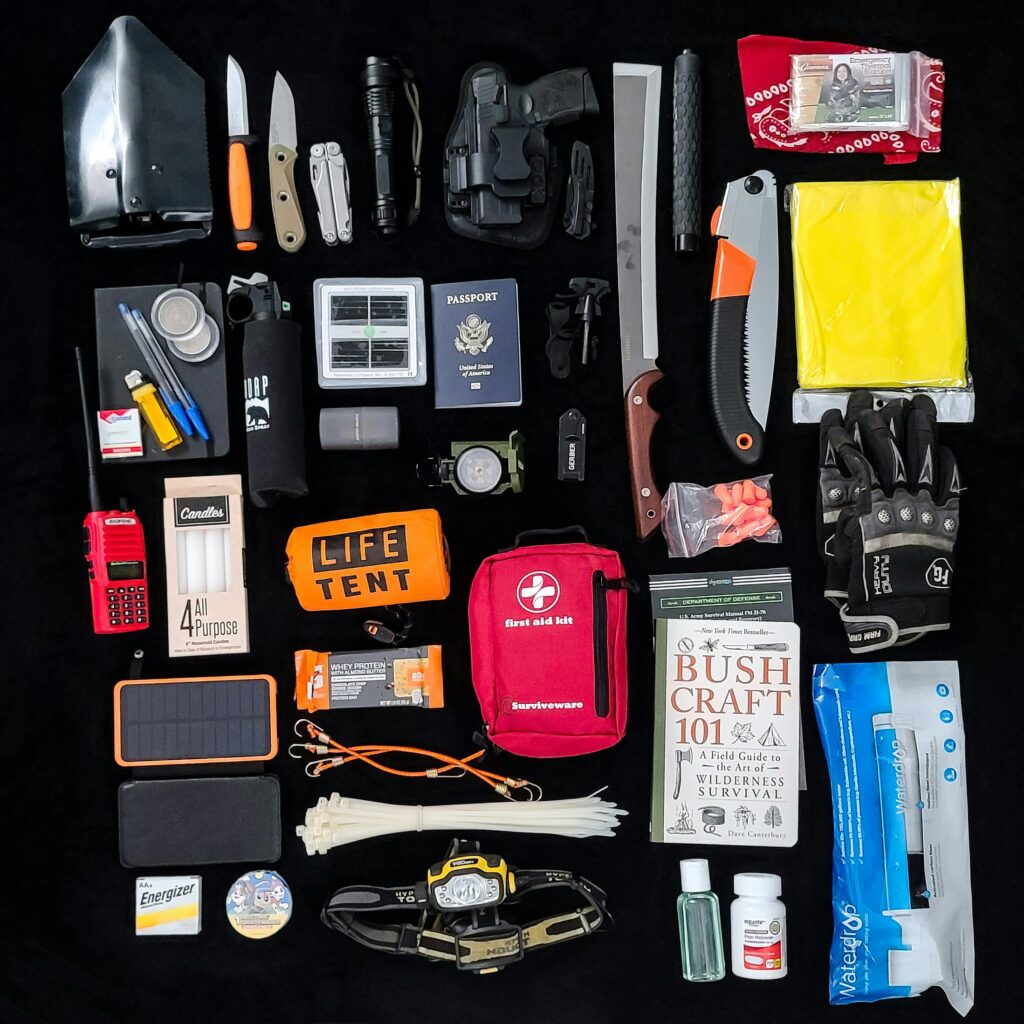
Supplies for Cold Weather RVing
- Thermal Blankets: Essential for extra warmth.
- Dehumidifier: Cold weather often brings humidity, leading to condensation. A small, portable dehumidifier helps prevent moisture build-up, which can damage your RV and lead to mold.
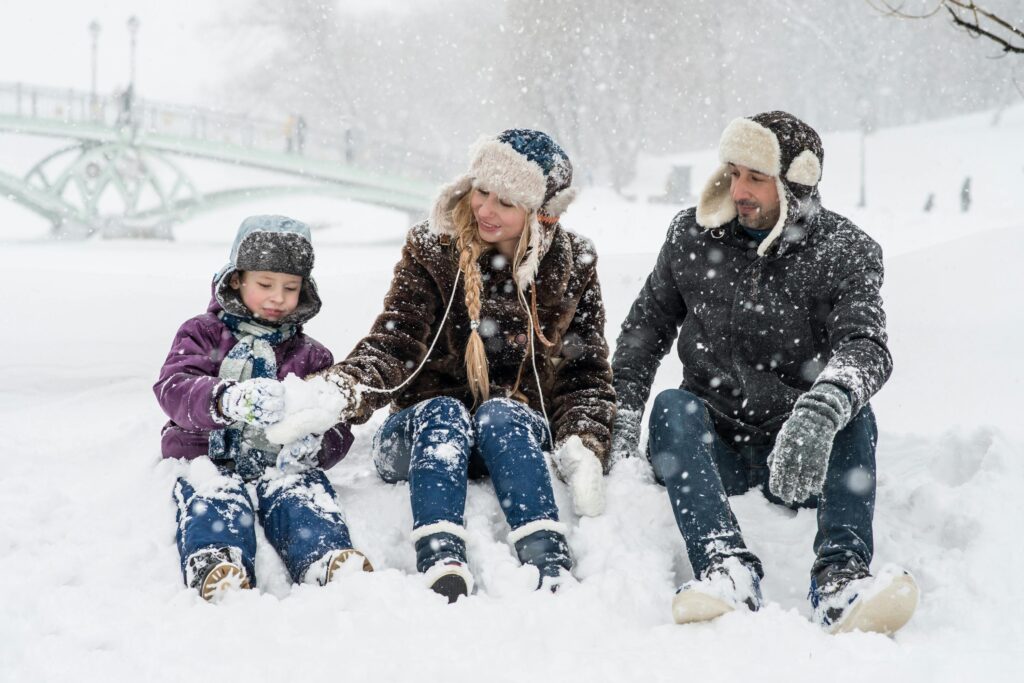
- Emergency Heat Source: A propane-powered heater or a wood stove (if suitable for your RV) can provide backup heat if the primary system fails.
Traveling in Rainy Weather
Driving Tips for Rainy Weather
When driving in the rain, ensure your windshield wipers are working effectively. Please check your tires have proper tread to prevent hydroplaning. Slow down on wet roads, as braking distances increase.
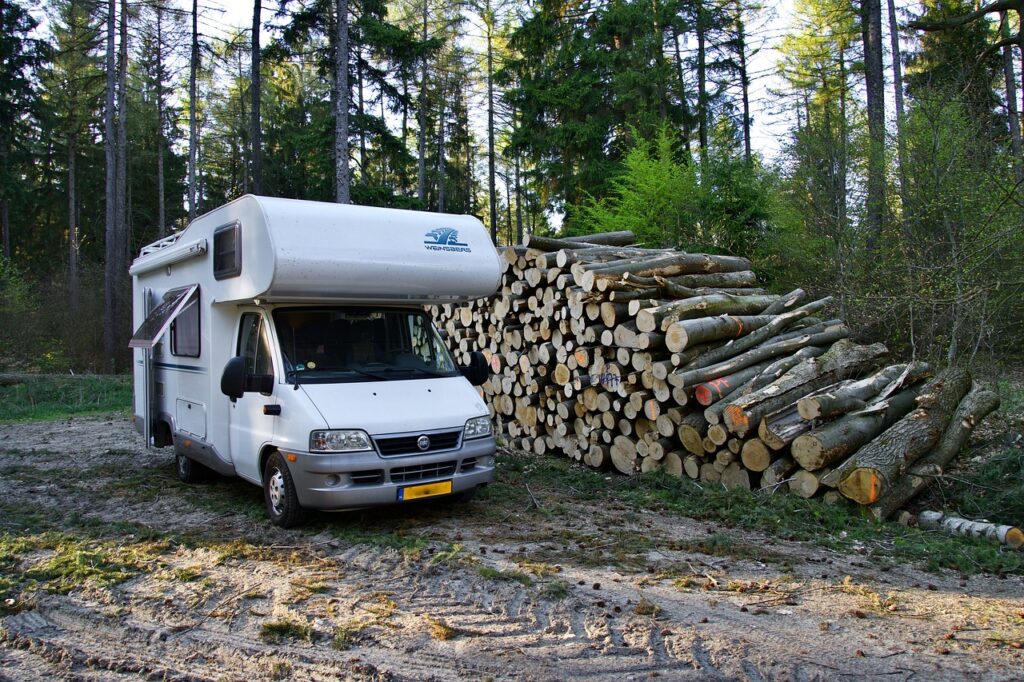
I usually use my cellphone to check updates, Redneck Rican way. Keep an eye on the forecast for flood warnings. If there’s a risk of flooding, avoid low-lying areas. I usually park my RV on higher ground.

Managing Moisture Inside the RV
Constant rain can lead to damp conditions inside the RV. I use the vent fans and open windows (if the rain isn’t too heavy) to maintain airflow.
A dehumidifier or moisture absorbers like silica gel packets can help reduce dampness inside.
Emergency Preparedness for Severe Weather
No matter where you’re traveling, severe weather can strike unexpectedly. Here are essential tips for being prepared:

- Emergency Kit: Include items like flashlights, batteries, a first aid kit, non-perishable food, bottled water, and tools for minor repairs.
- Weather Alerts: Keep a weather radio or a smartphone app with emergency alerts for up-to-date information.
- Evacuation Plan: If extreme weather (such as a hurricane or tornado) is expected, have an evacuation plan in place. Know where the nearest safe shelter is and be ready to move quickly.
Conclusion
Traveling with a RV offers unparalleled freedom, but it also requires careful planning for different types of weather. By preparing your RV for hot, cold, rainy, and severe conditions, Redneck Rican can ensure you a safe, comfortable, and enjoyable trip, no matter where the road takes you. Stay informed, maintain your vehicle, and be ready for any surprises that Mother Nature might have in store. Safe travels!




